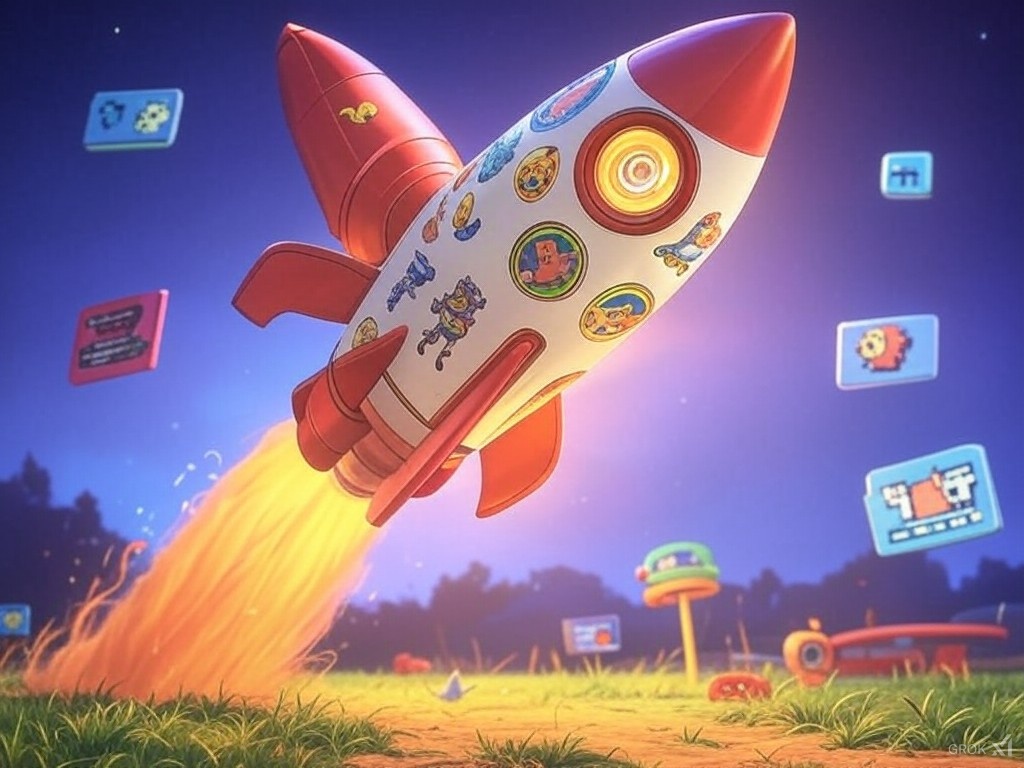To Infinity and Engagement: What Game Devs Can Learn from Toy Story
 Tim Smith
Tim Smith
Releasing a Game in a World of New Toys
Let’s face it: releasing a game these days is kind of like being Woody in Toy Story. Every day feels like Andy’s birthday or Christmas morning, with new toys—or in our case, games—bursting onto the scene. The gaming world is saturated. New releases drop daily, and the fear of being replaced by the next shiny thing is all too real. But, just like Woody learned, the key to staying in the spotlight isn’t just about being the newest; it’s about building relationships and staying engaged with your audience.
The Pressure of New Releases
Woody’s fear of Buzz Lightyear wasn’t irrational. Buzz had it all: the flashing lights, the cool wings, the “to infinity and beyond” swagger. Woody, meanwhile, was left wondering if Andy would still want to play with a pull-string cowboy when he could hang out with a Space Ranger. This dynamic is a perfect metaphor for game developers watching flashy new titles pop up every day.
It’s natural to feel like your game might be overlooked in the noise. But here’s the thing: Woody didn’t win Andy over by trying to outshine Buzz. He leaned into what made him special and doubled down on his connection with Andy. Game developers can—and should—do the same with their players.
Why Early Engagement Matters
In Toy Story, Woody’s strength wasn’t his pull-string catchphrases or his cowboy hat. It was his bond with Andy. Similarly, a game’s strength often isn’t just its mechanics or graphics—it’s the connection it builds with its players. And that connection starts early.
Even during the rough-and-tumble phase of friends and family testing, there’s a huge opportunity to engage your community. These early adopters can become your game’s biggest advocates. They’re the ones who’ll champion you when you finally launch to the world. By showing them that their feedback and experience matter, you’re building trust and loyalty that can’t be bought.
Lessons from Toy Story
Woody didn’t win Andy over by shutting Buzz out or pretending he didn’t exist. He won because he put in the effort to show Andy he was still worth loving. Developers can’t just launch a game and hope it magically becomes the next big thing. They need to nurture their players and show them they’re part of something special.
Engaging with players isn’t just about collecting bug reports (although, let’s be real, that’s important too). It’s about creating a space where players feel valued. Whether it’s sharing updates on development, responding to feedback, or inviting players into the creative process, these steps make your community feel invested in your game’s success.
Strategies for Developers
Here are some practical ways to start:
Closed Alpha and Beta Tests: Give your community a sneak peek. Let them feel like they’re in on the secret before anyone else.
Feedback Loops: Don’t just ask for feedback—act on it. Show your players that their input shapes the game they’re playing. Let them know that their voice is being heard.
Behind-the-Scenes Content: Share your journey. Whether it’s a dev diary, concept art, or just a goofy moment from your team, these glimpses make players feel like they’re part of the family.
Transparency: Own your wins and your challenges. Players respect honesty, and being open builds a stronger connection.
Conclusion
Like Woody learned, it’s not about being the flashiest or the newest. It’s about being the one players can’t stop thinking about, even when the next Buzz Lightyear hits the shelves. By engaging your community early and often, you’re not just releasing a game—you’re creating an experience that players want to come back to.
So the next time you’re gearing up for a release, channel a little bit of Woody. Lean into what makes your game special, connect with your audience, and show them that you’re here to stay. Because in the gaming world, just like in Andy’s toy box, it’s the relationships that stand the test of time.
Subscribe to my newsletter
Read articles from Tim Smith directly inside your inbox. Subscribe to the newsletter, and don't miss out.
Written by

Tim Smith
Tim Smith
Cofounder at Cohezion. Building the next generation of software that enables games studios to better connect with and understand their communities.